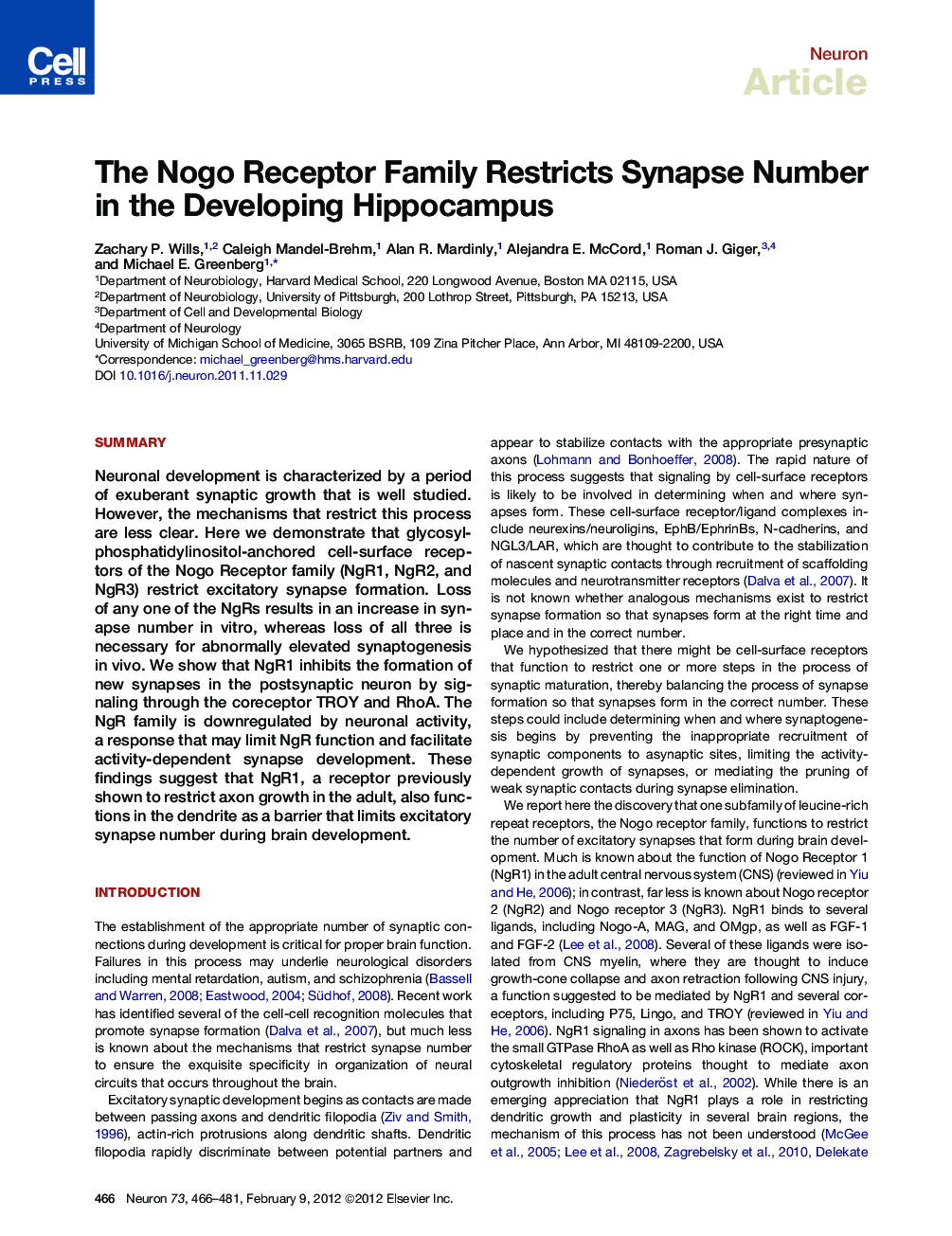| Article ID | Journal | Published Year | Pages | File Type |
|---|---|---|---|---|
| 4321490 | Neuron | 2012 | 16 Pages |
SummaryNeuronal development is characterized by a period of exuberant synaptic growth that is well studied. However, the mechanisms that restrict this process are less clear. Here we demonstrate that glycosylphosphatidylinositol-anchored cell-surface receptors of the Nogo Receptor family (NgR1, NgR2, and NgR3) restrict excitatory synapse formation. Loss of any one of the NgRs results in an increase in synapse number in vitro, whereas loss of all three is necessary for abnormally elevated synaptogenesis in vivo. We show that NgR1 inhibits the formation of new synapses in the postsynaptic neuron by signaling through the coreceptor TROY and RhoA. The NgR family is downregulated by neuronal activity, a response that may limit NgR function and facilitate activity-dependent synapse development. These findings suggest that NgR1, a receptor previously shown to restrict axon growth in the adult, also functions in the dendrite as a barrier that limits excitatory synapse number during brain development.
► Analysis of synaptic development in NgR1−/−, NgR2−/−, and NgR3−/− triple knockout mice ► Identification of a role for the NgR family in the dendrite ► The NgR family restricts dendritic and synaptic growth through TROY and RhoA ► The NgR family is downregulated by neuronal activity both in vitro and in vivo
